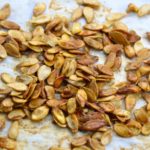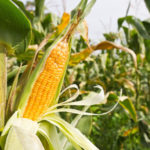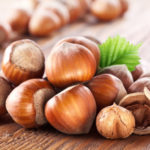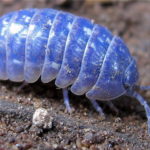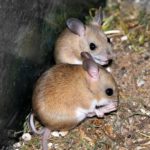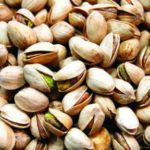Indian walnut
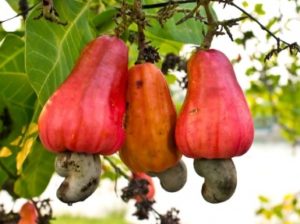 Everyone knows that one of the most nutritious foods is nuts. All of them are seeds of plants on which they grow. Nature has so disposed in the seeds are concentrated all the most valuable and nutrients inherent in this plant that would allow its reproduction. Getting into favorable conditions, the seed, using only life-giving moisture and heat, is able to grow at the expense of its internal reserves and eventually turn into a full-fledged tree.
Everyone knows that one of the most nutritious foods is nuts. All of them are seeds of plants on which they grow. Nature has so disposed in the seeds are concentrated all the most valuable and nutrients inherent in this plant that would allow its reproduction. Getting into favorable conditions, the seed, using only life-giving moisture and heat, is able to grow at the expense of its internal reserves and eventually turn into a full-fledged tree.
Therefore, the seed in itself harbors large energy resources that are used not only by the plant, but also the animal world. Seeds feed on the majority of birds and small animals, which even the habitat have chosen exactly where these seeds are abundant. Squirrels and chipmunks live in coniferous forests, feeding on cedar, pine or spruce seeds.
The habitat of most birds where there are many fruit trees and berry. And there are plenty of such examples. At the dawn of their development, people realized that eating only a few nuts can not only satisfy their hunger, but also give the body more energy to use them. Therefore, nuts are firmly established in the diet of many nations. And with the development of trade, this nutritional product has gained popularity all over the world, even where it does not grow.
Nature also worried about the fact that the plant seeds would survive the winter and could sprout the next year. Usually they are hidden inside the fruit: pine nuts in cones, walnuts in a thick peel, under which there is a dense shell.
There are several types of plants on which nuts grow. In the northern regions and the middle lane, these are pine and hazelnuts, hazelnuts and walnuts grow to the south, pistachios or almonds are common in countries with very warm climates. In many places, groundnuts, the so-called peanuts, grow. And in those parts of the globe where there is no winter, it is always warm and humid, the properties of the seeds to be well wrapped up for the winter are not needed at all. And just there grows an amazing plant with no less amazing fruit-nuts.
This plant is scientifically called “Western Anarkadium”, but it is more commonly known to our people as Indian walnut or cashew nut. The fruits growing on this tree do not look very ordinary. It is a rather large fruit, orange or red in color, up to 10-12 centimeters in size, which looks like an inverted pear or bell pepper, which is called “apple-cashew”. At the end of this apple is a solid dark green or almost gray nutlet, which is the true fruit of high calorie and amazing properties.
Where and how to grow Indian walnut
Indian nut was called in everyday life because it was the first time he came to us from India. Although his birthplace is not India, but distant Brazil. And the Portuguese brought him to India, in the Middle Ages, the most famous sailors. In India, the nut caught on easily and from there spread throughout Indo-China, and then to Africa. The name “Indian nut”, the Portuguese transformed it into “I see”, and the British into the usual “cashew”.
Indian walnut is a lover of hot and humid climate. Therefore, Indian walnut trees grow only in the tropics, most of these trees can be found at home in Brazil, mainly in the east of the country. They cultivate wood in all countries where the climate permits – more precisely, in India, West and Southeast Africa, in Vietnam and Thailand. From the countries of the former CIS, Azerbaijan can boast cashew plantations. By the way, Vietnam ranks first in the world in the production of cashews, and India in their use.
In terms of botany, “cashew apple” is simply an expanded pedicel, which is also edible. The cashew itself looks like a plump comma with a hard gray-green shell. The kernel of the nut is pale, creamy, the taste is rather oily. “Cashew apple”, orange or red, slightly elongated, has a peculiar taste, slightly astringent.
However, in order to try this unusual fruit, you will have to travel to India or to Brazil, since it cannot be transported and deteriorates too quickly. The tree on which Indian nuts grow is not high, just 12 meters, but with a very spreading crown. It blooms with small greenish-pink flowers, collected panicle or corymbose inflorescences, in place of which then fruits are formed.
Useful properties of Indian walnut
They were first discovered by the Indians of the Tikun tribe, they used all parts of the tree – the bark and leaves, fruits and roots. It is not surprising, because the tree has a lot of useful properties. Fruits of Indian walnut, called “cashew apples,” are extremely juicy, so they are used in food and are made from them jelly, compotes, various drinks, including alcohol. This pseudo-fruit is also used in the preparation of seasonings and sauces, in particular the chutney sauce. The “cajouina” drink, which is also made from “cashew apples,” is very popular in Latin American countries. Fresh, these fruits can be consumed only the first day, so they are processed immediately after harvest. Cashew alcoholic beverages are very popular in India, especially Fenni.
The nut itself is also used in food, it differs from other nuts in that it has a very low percentage of allergens. Instead, they saturate the body with proteins and carbohydrates, vitamins of groups A and B, as well as iron. From trace elements nuts contain zinc, phosphorus and calcium. In addition to eating directly, peanut butter is produced from these nuts in Asian countries.
Nuts bring undoubted benefit to the teeth, they actively fight against harmful bacteria that destroy teeth. African doctors make powder from these nuts and rub their teeth and gums. Russian dentists also recommend these nuts for food.
And not only dentists – nutritionists also recognize Indian walnut as a very useful product. They help to cope with anemia and exhaustion. Despite the fact that nuts are actually not dietary foods, they are recommended to be included in the menu and those who want to lose weight simply because they are wonderfully saturated and easily digested. Of course, the size of a portion of nuts should be small, otherwise the effect will be the opposite – they are quite high-calorie, like any nuts.
Among other things, Indian walnut is also recognized as a very effective aphrodisiac, acting on both men and women.
Due to the mass of nutrients, cashew helps to normalize the level of cholesterol in the body and strengthen the immune system. In addition, these nuts have antiseptic, antibacterial and tonic properties.
The benefits and harms of Indian walnut
Unlike all other nuts, the maximum that can be in the plan-harm is individual intolerance. However, the fruits are of some danger for workers who carry out manual cleaning of the crop. Between the shell and the kernel of the nut are caustic substances that irritate the skin on contact. Therefore, the shells are removed very carefully, and the nuts themselves are calcined to remove residual resin. Since the cleaning of nuts from the shell is a rather laborious and harmful to health, this work is paid fairly well. Previously, all this was done manually and mainly used by female labor.
However, these inedible parts also do not disappear. They produce wood treatment to protect it from rotting, and in India, cashew decoction and kernel husks are considered a powerful remedy against snake bites.
Now there has been significant progress. Machines are used for cleaning nuts, but harvesting and sorting finished products in the majority, especially in India, is done by hand.
The only contraindication to the use of Indian nuts in food can only be called an individual intolerance to the product. And the caloric content of Indian nut is on the fourth step after almonds, peanuts and walnuts – it contains 50% fat, which is a bit compared to other nuts, although the fruit is rather oily. Its caloric content is 600 kcal per 100 grams of product.
Indian walnut is not uncommon in points of trade and markets. True, manufacturers often salt and roast the nuts, which does not add to their benefits and makes them more nutritious, but allows them to keep the product longer. It happens that they are combined with honey or chocolate. But the most useful and best preserved whole, not chopped nuts.


